NO RES- FAMOUS DESIGNER-Very Seaworthy Classic Ocean Cruiser-SAIL TO THE ISLANDS
1969 William Creaklock Columbia 36
| Make: | William Creaklock |
| Model: | Columbia 36 |
| Type: | Sloop Rigged World Cruiser Sleeps 6 |
| Year: | 1969 |
| Location: | Norfolk, Virginia, United States |
| Want to buy? | Contact seller! |
Description
This is the perfect sailboat investment value for a couple or small family to have a capable world cruiser that doesn't break the bank. These are very solidly built "Classic Plastic" cruisers from the peak of hand laid, thick lay up woven roving fiberglass hulls. The design is one of the most successful designs every built, and from an era when fiberglass boats were considerably "over-built" in order to overcome the prejudice of many wooden boat sailors who were still skeptical of the new technology. The designer William Creaklock was made famous by this design, which when it came out was considered a very large spacious family boat, with a full standing shower in the bathroom (head) full size galley and stowage and sleeping berths for six people to cruise comfortably for extended voyages. These boats today are found all around the world, many in foreign countries and a few have even circumnavigated. After designing the Columbia 36, which was the most successful boat of its size and class ever produced during its production run, William Crealock went on to design the super well-respected line of blue water world cruisers under the WestSail, Pacific Seacraft and Cabo Rico brand names, which are all about 4 to 6 times more expensive than the Columbia 36 boats in the same size. The Columbia 36 is the way to get a true William Crealock vessel without having to spend $150,000 to $400,000.The very heavy keel of 5000 pounds of cast lead gives the boat a very comfortable sea motion and stiffness in the heavy seas of open ocean sailing in heavy weather. These boats are literally like five times stronger hulls, compared to the more modern hulls from the 1980s and 1990s built with thin sprayed "blown chipped" fiberglass construction when the boat manufactures tried to start saving money on production to stay in business during the infamous era or the 1980s luxury taxes.
More Photos and more detailed description Coming Tomorrow. In the meantime do a bit of homework on these fine cruising yachts. Interior is pretty decent but not perfect. I have not tested any systems other than trying to start the motor and sailing the boat to a new harbor. The previous owner is retiring from the Navy and I got an amazing deal on this boat because he needed it moved from the Navy Officers Marina before his marina contract expired, and he has moved inland and can't take care of the boat while living several hours away from the coast.
Photo from behind of the boat sailing is a photo from the old Columbia 36 brochures just to show you what they look like from a distance, but it is a sister-ship rather than this actual vessel.
TERMS OF THE AUCTION:
Please read the entire auction text and study the photos so that you can be a fully informed bidder. If it is possible for you, also please come and check out the boat in the real world. That is the best way to truly get an accurate idea of whether the boat will meet your needs and expectations. Please place bids based on what funds you have available on-hand or on credit cards etc. PAYMENT IS DUE IN FULL WITHIN 24 HOURS. PLEASE CONSULT YOUR SPOUSE OR BOAT PARTNER(S) BEFORE MAKING THE COMMITMENT TO MAKE A PURCHASE. YOUR BID IS A LEGALLY BINDING CONTRACT TO PURCHASE THIS CLASSIC VESSEL, SO DO YOUR HOMEWORK AND MAKE CERTAIN THAT IT IS THE RIGHT CRUISING YACHT TO SUIT YOUR NEEDS AND BUDGET. If you have questions to ask about the boat I will be happy to speak with you on the phone, or if you wish to schedule a boat tour before the auction closes, please give me a shout.
William 970 319-4361
A little about us:
We are the Founder's of the Academy of Cruising and the business Cruising Consultants Inc. Our passion is to assist folks who are making a transition from day sailing or coastal cruising to becoming full-time live-aboard world cruisers. We also assist new sailors who are just getting into the sport of sailing by advising them on how to develop their skills and how to make plans to pursue the dream of cruising and world traveling full-time.
We have extensive contacts and resources for finding good world cruising boats at far below their fair market value, and occasionally we discover an amazing neglected vessel at a price that we know may enable a cruising family or a retired couple on fixed income the ability to pursue the dream of cruising without the sort of means and savings normally associated with pursuing this lifestyle.
In those cases, like this boat, we work to try and find a new home for a good “below market value” boat, with people who will fully restore the vessel, and hopefully use it for the serious cruising that the boat was designed for.
There are many aspects of life where experience really matters, but none so much as global cruising. When you are planning to take a small boat across vast oceans and visit foreign ports of call on your own terms you must truly learn to become Master's of your Own Destiny. It doesn't matter how wealthy you are or how talented you are at managing large organizations or companies with dozens of staff people.
When you are on a boat in the middle of the ocean, the choices you have made, the choices you will make and your own internal skills and the undeniable truth of how well or poorly you have planned for your expedition, are the factors that will determine whether your experiences become a positive adventure or a frightening (or even life threatening) catastrophe.
When you are looking at a boat parked peacefully at a dock or on jack stands at a boat yard, you will be tempted to judge it based on whether the lines are nice and whether it is pretty or ugly and whether it is new or old and well kept or run down.
The ocean however, operates according to immutable laws of physics. The ocean does not care whether it sinks a pretty boat or keeps an ugly one floating. It does not care whether you are a skilled sailor with dozens of years experience under your shade hat or whether you are an amateur on your first weekend pleasure cruise. You will be served exactly the same conditions of wind and waves whether you were born wealthy or if you were raised in a cave by baboons.
The only control you have over these situations is knowing when to sail and when not to sail, and you can prepare yourself so that when the wrong situation strikes, if it ever does, you are skilled and prepared to deal with it and have a vessel that is prepared to handle the same.
For people who are wanting to go cruising full-time, or who want to go from being pleasure sailors to competent seamen and seawomen, choosing the right boat is the first and sometimes ultimately most important decision of their nautical lives.
Of course you can always sell or trade a boat and then buy a different one, but still the choice of each boat will influence the experiences you have and it will determine in many ways the capabilities or limitations of what you can or can't do while you have that boat for your home—even if it is only home for a few weekends here and there.
There are many nuances and subtleties to sailing, as well as to each individual vessel. A boat that may be just exactly perfect for one sailor or family of sailors, may be completely the wrong boat to suit another person's dreams.
By nature, boats require a lot of maintenance and upgrades, and if you are someone who wants all the possible bells and whistles, boating can be a very expensive occupation.
However, there are also ways to save a lot of money and still pursue the dream effectively and safely create a new floating paradise for yourself. But each person or each couple's needs are different.
There is no such boat as a boat that is not a project boat.
Long before we were married, when my wife was only 12 years old, and her father (a relatively wealthy man at the time) purchased a brand new Beneteau 46 for the family to live on for years, and to cruise the world on, the first thing he did to a brand new half million dollar boat was to spend another $27K on equipment upgrades, new electronics installations and custom modifications.
The reason he did that is because no boat, no matter how shiny and brand new, is exactly right for everyone's individual tastes and needs, and no boat comes straight from the factory completely ready to do anything other than Wednesday afternoon beer can races.
I often get asked by people who are shopping for a used boat to go cruising the world, “Is this boat ready to cross the Atlantic?” or “Does it need anything before it is 'Ready to Sail.”
The very nature of that question is a showcase of their naivety. Even if the answer were “Yes, the boat is ready.” (which would be impossible to have any boat ready unless you have spent thousands of dollars on a cruising chandlery and provisioning service ahead of time) the greater question is “Are such novice sailors who need to ask such questions ready themselves?”
Even if they had the absolutely perfect boat, prepared ahead of time by die-hard professionals to get it ready to cast off the lines and sail to points distant and exotic, would the sailors know where everything is at on the boat and how to operate those systems and how not to break them with ignorant mistakes or how to fix them once broken? And if they knew all those things, would the boat be equipped with the necessary repair tools and supplies as part of the process of getting it ready to sail?
So all these are big questions, and the only easy answer is that any sailor must become intimately familiar with their vessel prior to making long voyages beyond sight of land. The easiest way to become familiar with a boat so that it is not a stranger but rather a trusted old friend is to do a lot of weekend coastal cruising with it, while you work all the bugs out. Also, the more projects and upgrades you do yourself the more familiar you will be with how they work, how to maintain them and how to fix them again if anything every goes wrong. To depend on the expertise of professionals left behind in a port in a distant country you cleared out of months ago is only to invite future disaster...and its also much harder on the wallet.
So any time you can add to your own skills and knowledge of your own boat by doing your own work, or hiring a professional to help you do it yourself, you are preparing yourself for future success as a cruiser.
Any boat, even a brand new boat, will have things about it that you want to change or upgrade or move or install prior to making long voyages.
The better questions to ask are:
“What is the proper amount of maintenance and upgrades that I will make to my vessel prior to setting sail?
How many things need to be changed or fixed before I leave the continental US?
How many projects will I work on, as little projects along the way, when I have a slow day at a boring anchorage and there are no cruiser parties to attend and no interesting conversations of the side channels of the VHF.
How many projects are absolutely vital to get accomplished before I begin actively using the boat as a full time residence and a floating RV that can sail to any country with a coastline?”
How many projects do I want to tackle myself if it means I can save literally tens of thousands of dollars on the purchase price of a boat, and how much more ultimate value do I get for my money by buying a larger or more seaworthy boat with a few bigger projects to tackle, than if I buy a smaller or more flimsy boat that is cleaned up nicer and has fewer problems to address. (Remember the ultimate cosmic law of boating – even if you can't see any problems at all with a boat, and no projects needing doing, as soon as you own it and begin to sail it, you will start to find those quirks and bugs) So don't fool yourself into believing that you can simply buy a shiny new boat from a broker at full market value, or even by paying more than boat blue book value, to avoid ever having to make repairs or upgrades.
Any experienced sailor or boating professional other than someone selling fancy new boats will admit to you that there is no such boat other than a “project boat.” The only question is “What are the projects and how much money will I save by doing them myself versus hiring someone else to complete them?”
Every boat that I have ever bought or ever sold, which is now many dozens of them, had varying degrees of things needing to be improved about it. Even the brand new boats straight from the showroom floor or boat show sales dock will need bottom painting and new zincs and fuel cleansing treatments and oil changes and manifold and riser inspections within a matter or months of casual weekend use.
The longer any boat sits without the proper level of loving regular maintenance the faster it will deteriorate, and tiny 15 minute projects will turn into hour-long projects and hour-long projects will turn into day-long or week-long projects due to continuing neglect.
The quality of the build is also important. A cheap boat will have cheap boat problems, and it will have serious issues far faster and more frequently than a very well built boat from an esteemed yacht designer and builder even if the better boat looks worse initially.
In many ways you are better off to buy an older and more well regarded vessel in worse “first impressions” condition than to buy a shiny and well kept cheaper new boat. In the long run the better boat will cause far fewer headaches once you have it restored fully and you are taking care of it yourself, whereas the cheap but glossy boat may still look new and shiny for years, but begin having serious and costly problems that cannot be seen even while it still looks great in Facebook boat pictures.
Boating is like riding a horse or driving a high performance sports car. You always have to be involved in the life of your boat whether you use it frequently or not.
But this is not a bad thing, because it is part of the pride of ownership, and the regular maintenance and upkeep and small projects is what enables you to avoid the big ones or to at least know which big ones you need to do sooner and which ones can wait till later.
As you will guess by now, I'm a bit of a philosopher sailor when it comes to helping folks find just the right boat to serve their needs.
I am currently writing a book on that very topic which will be called, “The Seven Questions of Cruising (or) the Seven Questions you should ask yourself before buying a Boat.” Here is a quick preview of the questions you should be trying to answer from the introduction to my new book.
-
When you go to buy a boat, especially if it is your first boat, there are a lot of decisions to be made and hard choices to figure out.
Before you begin searching for the correct vessel to serve your needs, you need to first ask yourself, (and your cruising partners/ spouse etc) some important questions which will help you immensely in the quest to find the perfect small ship to suit your needs.
Question Number 1- Where do you want to sail to (now and also possibly in the future)?
#2 – Who might be going with you and/or who might want to visit you and stay on the boat with you once you get to that exotic foreign port (if global cruising is your goal) or that incredible weekend getaway spot (if weekend cruising is your thing).
#3 – How much do you want to spend on this adventure called boating/sailing/?
Also, how much “can” you afford to spend if you happen to take a wrong turn with the adventure and “need” to spend more money to fix a problem or get yourself or your stalwart side-kick (your boat) out of trouble?
#4 – How handy are you? (i.e. - Are you someone who naturally takes pride in your ability to figure it out yourself, or are you the person who would rather call an “expert” and pay them to solve whatever problem you are having?
#5 – How much time do you have to save yourself money, because in sailing, as well as in life in general “time often equals money.”
#6 – Are you a weekend warrior and/or charter sailor, or do you want to cruise full time?
#7 – Do you care more about Getting There or more about “Being There” once you have arrived?
If I had more time, I would go into deeper discussion of how each of these important questions affects your choice of boat and how you can use those questions to determine if this particular boat is the best one to suit your needs and dreams.
However, this is already about the longest Ebay auction text in history, so if you want to discuss all that more fully and chat more about the particular little projects and tasks that need to be done to restore this boat to full world cruising status, then I'll be happy to talk with you on the phone for a few minutes.
Feel free to give me a call at 970 319-4361. -William
This boat is a boat that needs some basic skill level improvements and restorations, but nothing that can't be done by a person with average handy skills over the coarse of a few weekends while they are taking breaks in between weekend sailing trips.
All that said, with a no reserve auction, the best thing about this boat is that you may be able to invest a few weekends of your own labor and some affordable materials into restoring it into the valuable and glamorous boat that it easily could become again, and yet you have an opportunity to purchase it at a mere fraction of its restored market value.
To build this same boat today, the way it was constructed when it was new and using the same quality materials in today's product and labor costs would cost well over $150,000 to the boat builder, before even adding the sales broker's mark up. And so, a new boat built as well as this classic would typically cost about $250K or more after the marketing, distribution and brokers fees. So all that said, here is your opportunity to get a heck of a sturdy world cruising vessel for dimes on the dollar.
Good luck bidding. I hope it goes to a good home. Call me if you want to arrange to go and see the boat in person or if you have any other questions about it. Remember, payment is due in full within 24 hours. Thanks, William 970 319-4361
From Wikipedia, the free encyclopedia
W.I.B. Crealock
William Ion Belton Crealock (August 23, 1920 – September 26, 2009) was a yacht designer and author. He was one of the world's leading yacht designers from the 1960s through the 1990s, and his yachts were owned by the famous and wealthy, including Walter Cronkite and William Hurt.
-
1 Early years
-
2 "Vagabonding Under Sail"
-
3 Yacht designer
-
4 References
-
5 External links
Crealock was born in Westcliff-on-Sea, Essex, England in 1920. He attended the Glasgow University where he studied naval architecture and worked at the Glasgow shipyard during World War II.[1]
"Vagabonding Under Sail"In 1948, Crealock and three friends pooled their money, purchased an old cutter, and set out "to study the behavior of boats at sea."[2] Crealock arrived in the United States after "an unhurried two-year journey" in a small sailboat.[3] Crealock wrote about his adventures sailing with his friends in his first book, "Vagabonding Under Sail."[4] Crealock's second book, "Towards Tahiti"[5] (published elsewhere as "Cloud of Islands"[6]) relates the story of a lengthy cruise from Panama, via the Galapagos, to the South Pacific. On this cruise Crealock sailed on the ketch "Arthur Rogers," a Brixham trawler built in 1929, with its owners Tom and Diana Hepworth. The Hepworths later life in the Solomon Islands is documented in the book "Faraway" by Lucy Irvine.
In 1956 and 1957, Crealock was the first mate and navigator on a scientific mission aboard the "Gloria Maris," a 110-foot schooner.[7][8] The mission was commissioned by the National Science Foundation to study the shells of the Pacific Ocean. In February 1957, the schooner was caught in a typhoon in the South China Sea which rolled the ship to 60 degrees to starboard and put the water level halfway up the wooden deck.[8] Crealock recalled being forced to leave the deck at 1 a.m., telling the skipper, "There's no use going topside."[8] The wind tore the main mast from the deck, and Crealock concluded it would be suicide to go on deck; the schooner dragged the mast for 24 hours through the typhoon before it broke loose.[8]
Yacht designerIn 1959, Crealock began a career as a small boat designer in Southern California. In the 1960s, his fiberglass designs made boats quicker, less expensive to build, and easier to handle.[9] He designed boats for celebrities, including Walter Cronkite, William Hurt, and Claire Trevor.[9] He also became friends with celebrities, including Rock Hudson, Jane Russell, and Natalie Wood, through their interest in boating.[9]
In 1986, The San Diego Union wrote that, in local yachting circles, Crealock's name was almost as well known as that of the America's Cup champion, Dennis Conner.[3] Crealock said at the time that naval architecture was for people who love boats and boating: "We do it for a living, because if we didn't, we'd probably be doing it on the backs of envelopes."[3] He noted that he had started in Glasgow designing parts of large ships and found the design of yachts a more satisfying profession: "I soon realized it was not very romantic to spend several weeks designing one bulkhead on a big ship. So I started big and edged my way down to pleasure boats, which was what I really wanted to do, because in small boats you do the whole thing."[3] Crealock described the factors he considers in designing a boat:
"Seaworthiness in a cruising boat has to be the No. 1 consideration. It doesn't matter how cute the boat is if it doesn't get (the cruisers to their destination) in one piece ... Just about any boat does well in Southern California. A bathtub would do fairly well. But when things get bad, when it's blowing hard and rough, that's when the difference between boats shows up most. But beyond safety, you must give up in some areas to achieve in others. The boat must be aesthetically pleasing to the owner and not too slow – nobody likes a slow boat. But you can't take a camper and put it on a Ferrari and say you have the ideal combination."[3]In 1975, Bill Crealock designed the longest, lightest, trailerable Masthead ketch sailboat ever built, the Clipper Marine 32 Aft Cabin Ketch coastal diesel cruiser racer. About 100 of these sailboats were built in 1975 and 76, and many still sail the waters of the world today. CM32's had an 8-foot beam and 4,500 displament, were supplied with a two or three axle trailer that could be pulled by the family vehicle, put his design in the record books. A heavier displacement blue water CM32 was also built, and was also trailerable, sold in an aft cockpit single mast sloop. A smaller designed CM 30, a 30-foot motorsailor was also offered.[10]
In 1976, he designed the Willard 8-Ton World Cruising Yacht, a blue water yacht for long distance cruising, for the Willard Company.[11] Crealock's other well-known designs included the Westsail 42, the Crealock 34 and 37, the Pacific Seacraft 31 and the Dana 24.[12]
In 2002, the Pacific Seacraft 37, designed by Crealock, was inducted into the American Sailboat Hall of Fame.[9]
Crealock said the most unusual vessel he was ever commissioned to design was a large bottle. He recalled, "A guy sitting inside was to cruise it down the coast off the beaches to advertise a soft drink. It was never built, fortunately."[3] Crealock did not own a boat himself, saying he had no time to sail one. However, he enjoyed participating in sea trials of the boats he designed, joking that he did so "just to show I'm not afraid the boat's going to sink."[3]
Crealock died at his home in Carlsbad, California, in September 2009. He was survived by his wife, Lynne (Banner) Crealock, a daughter, a stepson and a grandson.[9]
PRACTICAL SAILOR REVIEW
A bargain-basement racer/cruiser from a granddaddy of American production boatbuilders.
It's hard to believe, especially for those of us who learned to sail in the 1960s, that fiberglass sail boats built back then are now a part of history. The "fiberglass revolution" that seems like just yesterday, is now 30 years in the past. A lot has in the world of boatbuilding since then, but many of those old boats are still sailing.
The Design
The Columbia 36 was in production between 1967 and 1972. One reader estimates that more than 600 were built, making it a very successful model.
The boat was designed by William Crealock, the California naval architect who today is more readily associated with the Pacific Seacraft line of bluewater cruisers bearing his name. The Columbia 36, with its transom stern, aluminum frame windows, and step-down cabin, bears little resemblance to the Crealock 34 and 37, whose canoe sterns and bronze portlights give it a tough, traditional, go-anywhere look.
The Columbia 36 was a pretty slick looking boat in its day, and though its lines have worn reasonably well with time, we're reluctant to call it a "classic." The sheer is essentially flat, with modest spring, the sidedecks wide and the cabin nicely proportioned. The rig is on the small side for this size boat.
Underwater, the divided underbody shows a swept-back fin keel that looks like an inverted shark's dorsal fin, and a skeg leading to the spade rudder. Interestingly, the propeller shaft (not shown in the drawings) is situated at the aft end of this skeg, which places it above and aft of the rudder and nearer the surface than one might expect.
The long cockpit rates highly with owners. One reader said it doesn't feel crowded even with a crew of eight.
The displacement/length ratio is 261, which is a nice number for good all around performance—too high for a hot rod, but just right for comfortable family sailing.
A subtle point about Columbias is the tooling. A wooden boatbuilder in Maine once told us that one of his objections to fiberglass boats was the absence of crisp, sharp lines and edges. Study a glass boat, especially an old one like the Columbia 36, and you'll see what he means. Every edge is generously radiused. Of course, some of this is necessary to pull a form from the mold, but not to the extent that Columbia rounded everything. In our opinion, many of the old Columbia's lose a few points in looks for this reason. An exception would be the Columbia 50, where wooden toerails (instead of the usual rounded, molded fiberglass toerails) go a long way toward alleviating the impression of an amorphous, eggshaped structure.
Construction
Like nearly all production builders in the 1960s, Columbia used standard hull laminates of polyester gelcoat, chopped strand mat and 24-ounce woven roving. Columbia was a pioneer in developing what it called the "unitized interior," or fiberglass pan, in which the engine beds, stringers and furniture foundations are all molded. This pan is then "tabbed" to the hull with wet fiberglass and is presumed to provide the necessary stiffening.
Finish work goes quickly after such a pan is in place. Teak trim, cut and milled in the woodshop, is simply screwed into place. The cabinet doors, juxtaposed against the gleaming white pan, and ubiquitous pinrails are as telltale of the late 60s and early 70s as shag carpeting.
The hull-to-deck joint is unusual in that it incorporates a double-channel length of aluminum into which the hull and deck flanges are fitted top and bottom. It probably made good engineering sense, but given the complaints about leaking, and the fact that this method, to our knowledge, has not been used by other builders, suggest it had its problems. Because aluminum has little or no springback, we imagine that bumping a piling could permanently "dent" this channel, causing leaks that would be very difficult to repair properly.
The deck was cored, and to finish the interior a molded headliner was glassed in. The old Columbia brochures are rather funny to read, showing as they do plant workers dressed in lab coats, installing winches, cleats and windows as if building a boat was no more difficult than assembling pieces from a kit. In fact, Columbia fomented this idea, marketing its boats in kit form and calling them Sailcrafter Kits.
The basic structure of the early Columbias was reasonably sound, and sold with a two-year warranty. That many of those boats are still around says something positive about general construction quality.
On the other hand, the boats were pretty much bare bones. No frills. But then, they were more affordable than a comparable boat today. We don't mind the opportunity to do our own customizing, but the interior pan limits what you can do.
Most readers responding to our Owner's Questionnaire rate the construction quality of the Columbia 36 as above average. No major problems were reported, though we do have some complaints of deck delamination. In all fairness, separation of the fiberglass skins from the coring is common in many older boats and should not be judged as a weakness peculiar to Columbia. But you should have your surveyor check the deck for soundness before buying.
Miscellaneous complaints include inadequate ventilation, need for a sea hood ("The companionway hatch is a joke"); various leaks at windows and hull-deck joint; and mainsheet and wheel poorly located. The brochure says the keels are lead, but at least one reader said his was iron.
Performance
The Columbia 36 was intended to be something of a hot boat when it was introduced. In fact, it was offered with a trim tab on the trailing edge of the keel for better control off the wind. A brochure credits the inspiration to the Twelve-Meter Intrepid's "lopsided defense of the America's Cup."
We don't know how successfully the boat was raced, but do know that its PHRF rating is about 162, making it just a hair faster than a Catalina 30 (168) and a Cal 34 (168). None of our readers indicate that they race. One said, "Built for comfort, not speed." Typical reader ratings for speed are "average" upwind and "above average" off the wind. Several note the importance of sail trim (true of any boat!); annoying weather helm (excessive weather helm is unforgivable, but we suspect there's always a few whiners in this department who must not understand that a boat without any weather helm is a bear to steer); and one reader noted that the spar doesn't bend much to optimize sail shape (bendy rigs weren't in vogue at that time).
The standard sloop rig doesn't carry a lot of sail. One reader said he had a "tall boy" mast, which presumably was available as an option, as was— surprisingly—a yawl rig.
The only unusual element of the Columbia 36’s interior layout is the placement of the chart table forward, opposite the head, rather than in its more common location near the companionway. Since radios and instruments are usually mounted near the nav station, we prefer it aft.
Overall, readers have positive remarks about seaworthiness, stability and balance. "The boat is a very good sailer," wrote one reader, adding that his boat "...has taken all Lake Michigan has to offer and never broken."
Most Columbia 36s were equipped with Atomic 4 gasoline engines. Several readers complain that the 30-hp. doesn't move the boat fast enough—about five knots. One reader had an Albin 20-hp. diesel. Another said engine access was very poor: "No room even to check oil."
Fuel tankage is 29 gallons; water is 44 gallons.
Interior
The layout of the Columbia 36 is standard, with a Vberth forward, U-shaped dinette amidships, and quarter berths aft. The sideboard galley puts the cook in the way of traffic, and the sink may have difficulty draining on port tack.
The most unusual feature of the plan is placement of the chart table opposite the head. This certainly isn't convenient to the cockpit for navigator-helmsman communications, but it does allow two quarter berths instead of just one. Readers note that the boat sleeps an honest six people, and tall ones at that. Headroom is listed at 6' 3".
Fiberglass interior pans tend to make for a rather sterilized appearance—the proverbial inside look of a refrigerator or Clorox bottle. We're not fond of them for several reasons: Pans restrict access to parts of the hull, tend to make the interior noisier and damper, and make it difficult to customize. But, that's the way it is with most production boats.
Conclusion
The Columbia 36 was a popular boat in the late 60s and early 70s, and still has its fans today. The basic structure is good. The interior is plain. We suspect that prospective buyers will find a wide range of customizing by previous owners. The quality of this workmanship will have a lot to do with your decision to buy or look elsewhere.
The BUC Used Boat Guide lists average prices for Columbia 36s ranging from about $25,000 to $33,000, depending on year and condition. Our original research showed those prices to be reasonably accurate. In today's market, you should be able to pick up a Columbia 36 in decent shape at a great price. One reader wrote, "The boat can be bought at bargain rates as it is the most underrated boat on the market."
Prices for all boats tend to be higher on the West Coast than the East Coast. Freshwater boats from Canada and the Great Lakes are most expensive (BUC Research says 25-30 percent more), and those in Florida and nearby states are the least expensive (about 10 percent less).
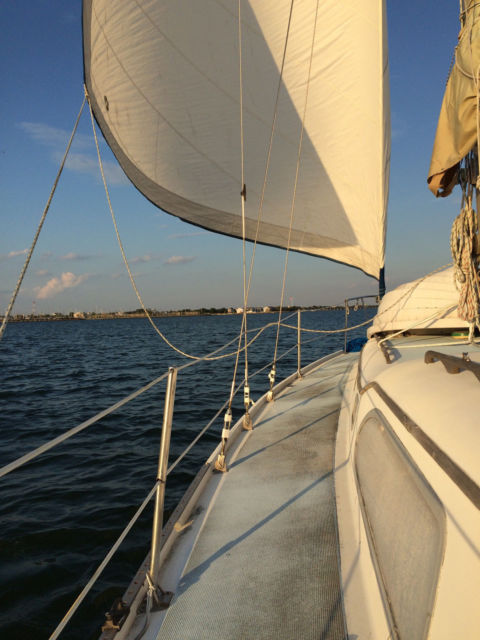
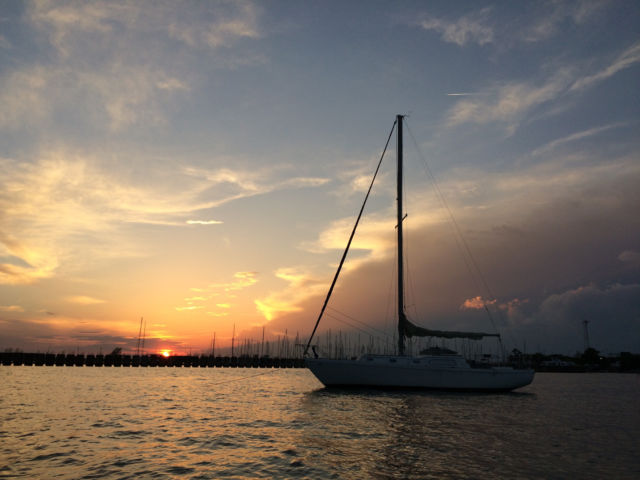
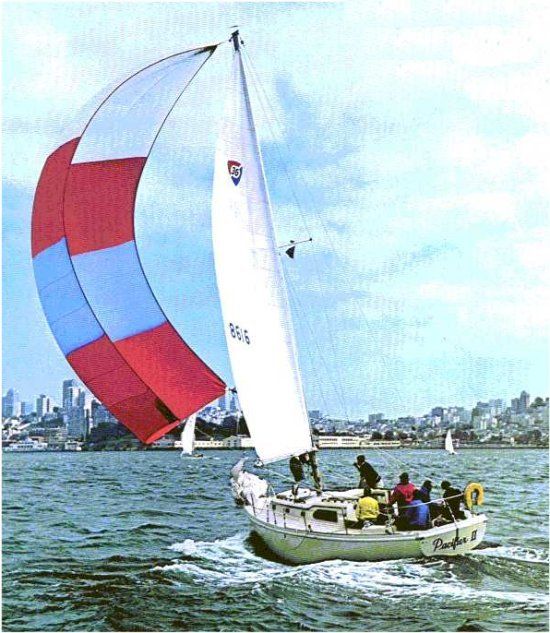
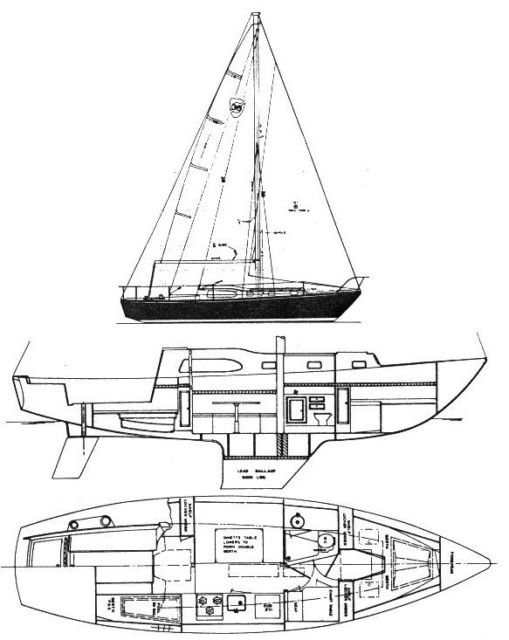
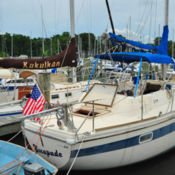 NO RESERVE - Famous Designer - HUGE INTERIOR Shoal Draft -Island Charter Cruiser
NO RESERVE - Famous Designer - HUGE INTERIOR Shoal Draft -Island Charter Cruiser
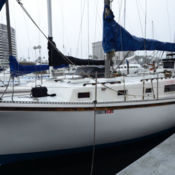 NO RSRV-SPACIOUS GLOBAL CRUISER- $8K Diesel Engine Runs Exlnt. PERFECT 4 ISLANDS
NO RSRV-SPACIOUS GLOBAL CRUISER- $8K Diesel Engine Runs Exlnt. PERFECT 4 ISLANDS
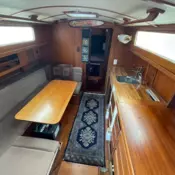 NoRsrv GORGEOUS/TOUGH GLOBAL CRUISER- HALBERG RASSY Famous Pilothouse Design
NoRsrv GORGEOUS/TOUGH GLOBAL CRUISER- HALBERG RASSY Famous Pilothouse Design
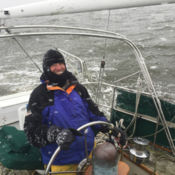 NO Reserve 4OFT LOCALLY FAMOUS WORLD CRUISER - Full Blue-Water Cruising Package
NO Reserve 4OFT LOCALLY FAMOUS WORLD CRUISER - Full Blue-Water Cruising Package
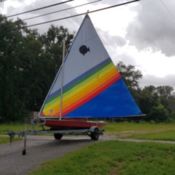 Beautifully Restored Classic Sunfish, Ready to Sail!
Beautifully Restored Classic Sunfish, Ready to Sail!
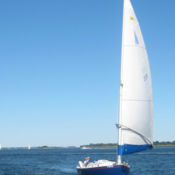 Sail Boat for Sale - Nonsuch 30 Classic - **Price Reduced**
Sail Boat for Sale - Nonsuch 30 Classic - **Price Reduced**
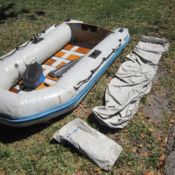 SEAWORTHY 8' 3" Rubber INFLATABLE Dingy..
SEAWORTHY 8' 3" Rubber INFLATABLE Dingy..
 Sail Boat 16 ft 2016 Classic Custom built wooden lapstrake of Herresoff design.
Sail Boat 16 ft 2016 Classic Custom built wooden lapstrake of Herresoff design.
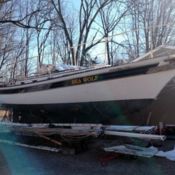 Beautiful ~ 1983 45.5 Bayfield Ketch Caribbean Seaworthy Vessel
Beautiful ~ 1983 45.5 Bayfield Ketch Caribbean Seaworthy Vessel
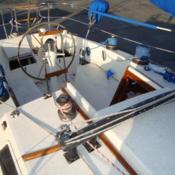 No Reserve FAST CAPABLE PACIFIC OCEAN CRUISER- SPACIOUS INTERIOR -Wheel Steering
No Reserve FAST CAPABLE PACIFIC OCEAN CRUISER- SPACIOUS INTERIOR -Wheel Steering